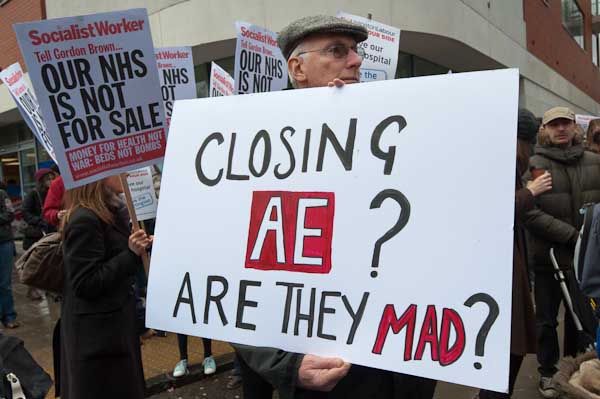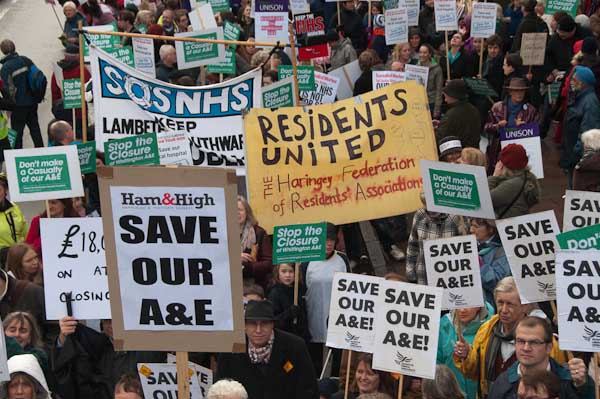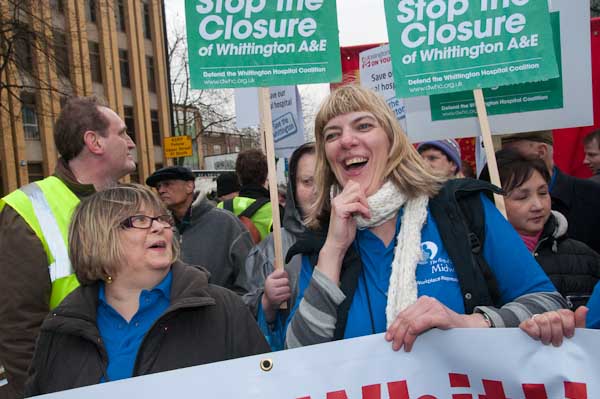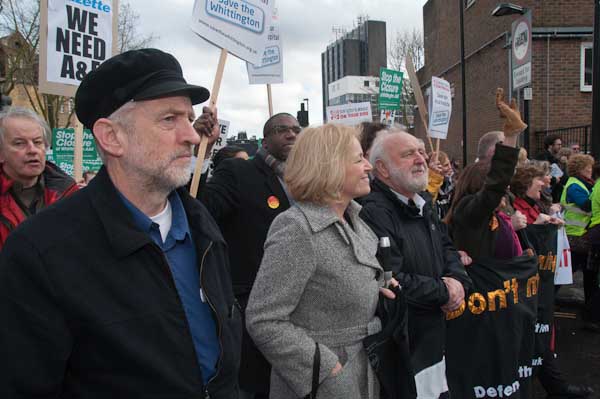Save the Whittington Hospital: On Saturday 27th February 2010 I joined around two thousand people at Highbury Corner to march the two miles to the Whittington Hospital in a protest against planned cuts in A& E and other services at the hospital under a rationalisation plan initiated by Lord Darzi, Parliamentary Under-Secretary for the Department of Health from 2007 to 2009. In 2008 he led a review of the NHS titled High Quality Care for All.
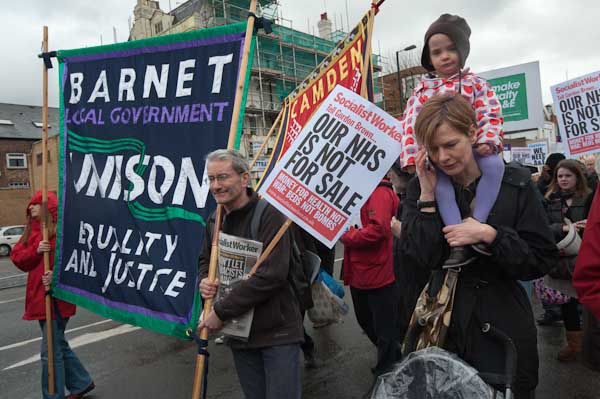
The proposals for North London arose out of this review and led to plans to would see A&E services downgraded at the Whittington and Chase Farm Hospital in Enfield as well as at either Barnet or North Middlesex Hospitals. He argued that by concentrating emergency services in a few highly-equipped hospitals with specialist facilities a better service can be provided. But the changes were also motivated by the forecast of a large forecast future NHS North London deficit of around £860 million in five years time.
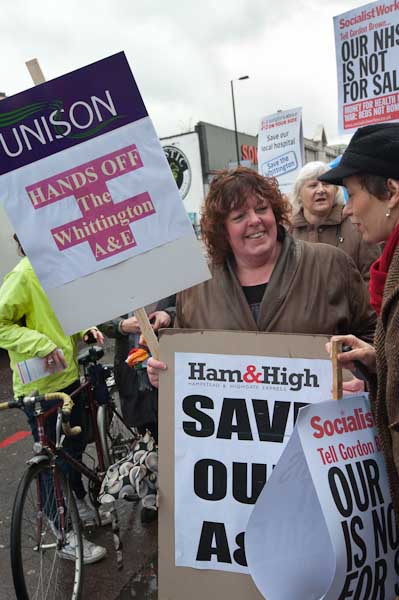
As speakers at the rally pointed out, these changes would lead to much longer journeys for patients through the congested streets of north London in emergencies, which would cost lives. The Whittington, close to the major junction at Archway and with good transport connections is a good place for a hospital and its part or eventual full closure would release a highly desirable and lucrative location for developers.

Among the marchers were several local MPs for the area served by the hospital, including David Lammy, MP for Tottenham and Minister for Higher Education and Intellectual Property in the Department for Business, Innovation and Skills, who pledged his support for the hospital and all its services, revealing that he had been born there.
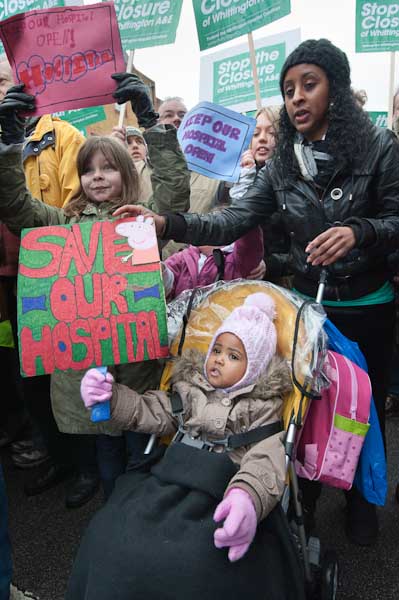
Frank Dobson who was Secretary of State for Health from 1997 to 1999 also gave a powerful speech in support, as did Lynne Featherstone, Liberal Democrat MP for Hornsey and Wood Green. MPs Jeremy Corbyn and Emily Thornberry were also at the event, as well as Terry Stacy, the leader of Islington Council. A number of celebrities with links to the hospital also supported the protests against its closure.

It was doubtless the celebrity support that gained the battle to save the Whittington much greater publicity across the media than most protests, though as usual the BBC did its best to minimise the protest, its web site “being deliberately misleading when it states that “hundreds of protesters” gathered for the march“.

I’d actually stopped and counted the marchers as the walked past me and although my count might have been a few tens out, there were just under 2,000 when it left Highbury Corner. More joined it on the march and others went directly to the rally at the Whittington where the organisers estimated 5,000 attended, though my guess was a little fewer.

In April 2010 after huge local opposition, Labour health minister Andy Burnham had cancelled planned cuts at Whittington Hospital at Archway in North London, along with other planned cuts at North Middlesex and Barnet Hospitals. Shadow health minister Andrew Lansley praised his decision to call “for a stop to the flawed plans by NHS London to shut down local hospital“.

In July 2024 another Labour health Secretary, Wes Streeting, commissioned Lord Darzi to carry out an independent investigation into the NHS in England, which was published without any public consultation in September 2024. I imagine we will soon be fighting to stop more hospital closures.
More at Save the Whittington.
Flickr – Facebook – My London Diary – Hull Photos – Lea Valley – Paris
London’s Industrial Heritage – London Photos
All photographs on this page are copyright © Peter Marshall.
Contact me to buy prints or licence to reproduce.








